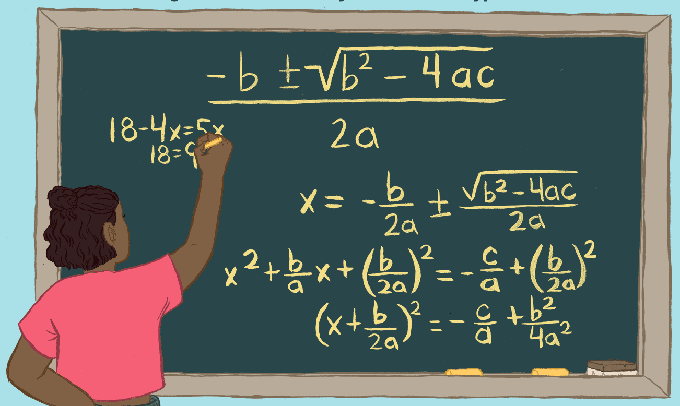
The disciplines of Science, Technology, Engineering and Mathematics (commonly grouped by the acronym STEM, or STEM for its acronym in English Science Technology, Engineering and Maths ) are often full of abstract concepts that make it difficult to understand.
If we think, for example, of our fridge magnets, it is fairly intuitive to understand that there is an attractive force that drives them to stick to the surface. But this intuition comes from our accumulated experience. What is perhaps not so intuitive is imagining the magnetic field lines that effectively model and describe this physical behavior. It is these kinds of abstract ideas that make the STEM disciplines particularly challenging branches of knowledge when approaching their learning.
Abstract concepts and video
Normally, in the classroom we rely on visual representations on the screen or blackboard, and exemplifications that help students to shape these theoretical and abstract concepts.
Through similarities and representations, the learning process is facilitated, in which the teacher can only act as a guide, but it is up to the students to complete it with a complete understanding of the phenomena studied.
The impact of the lockdown
During the confinement due to the pandemic experienced in recent years, and the consequent need to transfer teaching to the telematic format, there was also evidence of an increase in difficulties in effectively transferring this type of knowledge. The digital divide and unequal access to and use of technology brought additional complications, coupled with a notable sense of isolation and lack of motivation.
In this regard, video as a visual support plays a more than relevant role. Used as support for teaching activity, it provides the ability to help understand complex ideas through their animated representation. It can also serve to improve student motivation, as it is a digital format that is closer to their way of communicating and to current trends in the dissemination of knowledge outside the classroom.
Scientific popularization and YouTube
Of course, not all teachers have the resources, time or knowledge to develop these audiovisual materials to support their teaching activity. However, social networks, and particularly YouTube, are full of scientific and technical dissemination materials that could well be used in the classroom for various purposes: from the review of concepts to the implementation of methodologies such as the flipped classroom, passing by increasing student motivation or promoting debate and the search for information.
Our research has focused on the use of informal dissemination resources for educational purposes and on the evaluation of a YouTube channel for its integration in Electrical Engineering degrees. The channel in question is Sígueme la Corriente , and is specialized in energy and electricity.
The objective of the study focused, first, on detecting whether the channel was already having an educational use, even if it was not created for this purpose. In addition, the perception of your audience on key metrics for the videos to have pedagogical value would be evaluated, as well as the opinion of the audience on the pros and cons of integrating videos in the classroom.
To do this, a survey was prepared and provided to all channel subscribers (70,000 users in July 2020), from which a sample of 912 participants was obtained. The results were undoubtedly very positive.
Informative videos in STEM
As a result of the study, it was confirmed that the channel has a high educational use, although this had never been its main objective (72.7% of those surveyed make educational use of the channel). Above all, this use is associated with the profile of pre-university students, but also with that of university students and professionals in the electricity sector.
In addition, up to 82.4% state that the selection of topics made on the channel coincides with their interests. And almost all of the respondents, 91.6%, agree that the channel has an adequate technical level for understanding concepts.
These outstanding results suggest that the format and cognitive load of the channel’s informative videos are perceived as adequate for educational use. And this complementary use gives us the opportunity to apply new strategies that facilitate its integration in the classroom.
Dissemination and flipped classroom
YouTube can be a very useful tool to improve teaching, complementing the teaching activity. In this way, scientific disseminators can make specific efforts to begin to walk that path into the classroom, creating videos particularly focused on their use in teaching. The videos could be used in class as motivational support, and students could use them to review concepts. Finally, teachers can also use them in flipped classroom strategies.
This line of research is part of the efforts that numerous researchers around the world are making towards evaluating the integration of new technologies in the classroom. It is necessary to develop new case studies that evaluate the optimal strategies for content creation and their specific impact in the classroom. These must serve a dual informative-educational purpose. However, the prospects are very encouraging.
Author Bios: Ruben Lijo Sanchez is a Doctoral Student, Doctoral Program in Education at the University of La Laguna, Eduardo Gregorio Quevedo Gutierrez is Professor of the Area of Statistics and Operational Research, Department of Mathematics at the University of Las Palmas de Gran Canaria, Jose Juan Castro Sanchez is Professor of Psychology also at the University of Las Palmas de Gran Canaria, and Ricard Horta Bernus is Professor Full Professor of the Department of Electrical Engineering at the Escola Superior d’Enginyeries Industrial, Aerospace and Audiovisual of Terrassa (ESEIAAT) at the Universitat Politècnica de Catalunya – BarcelonaTech
